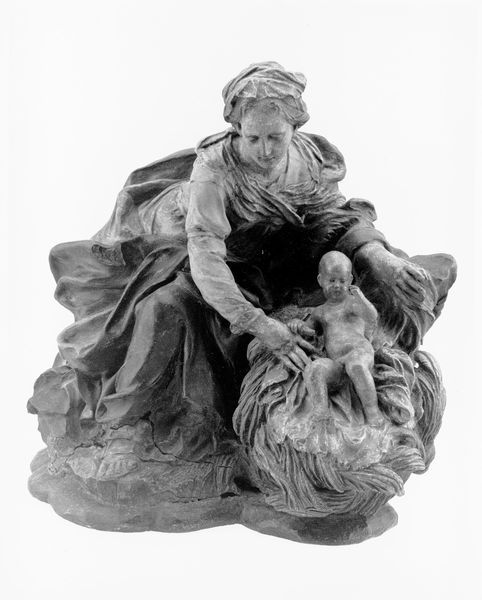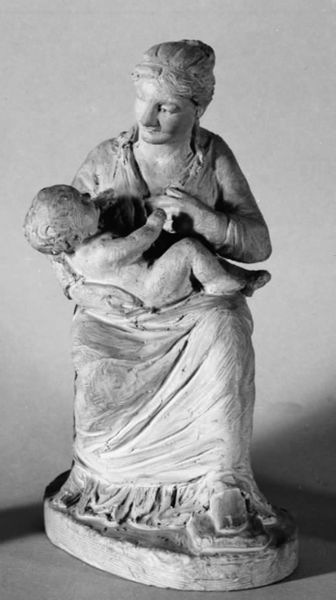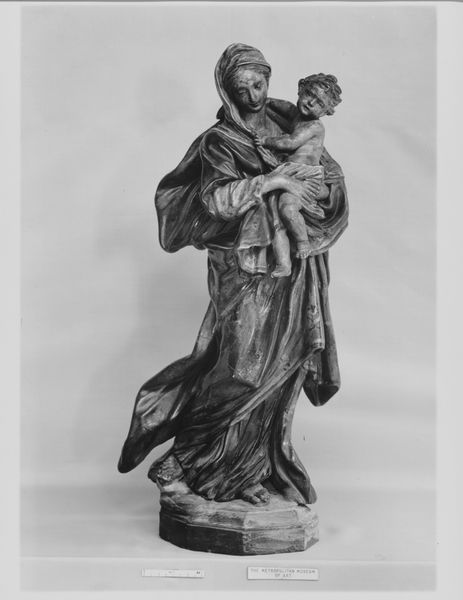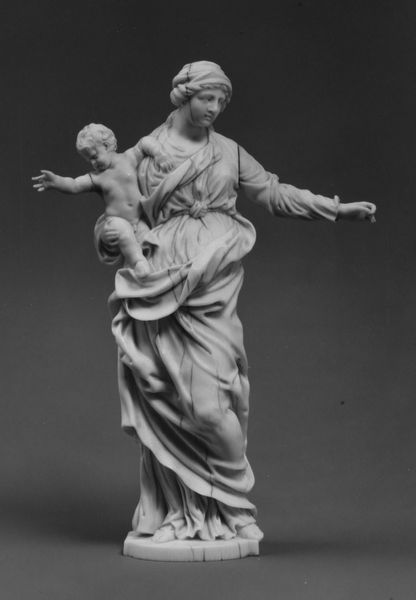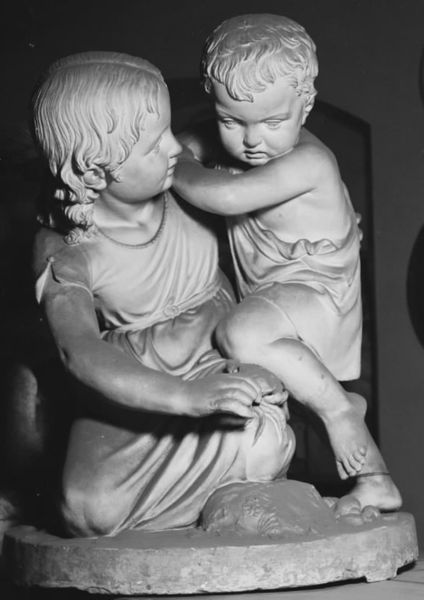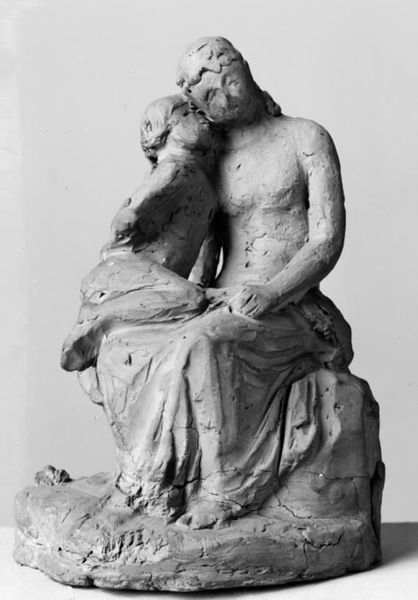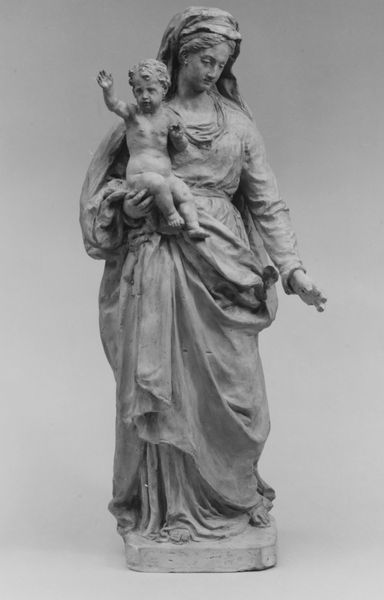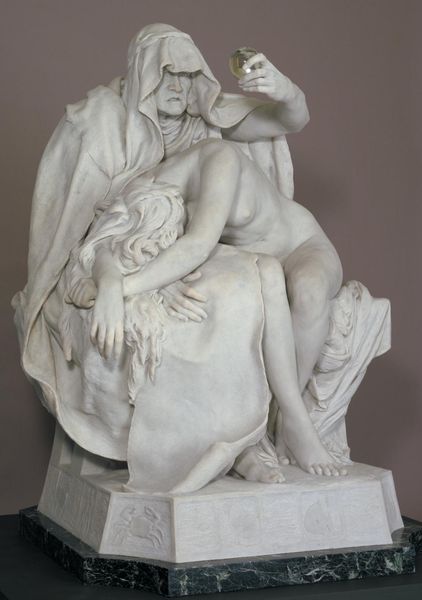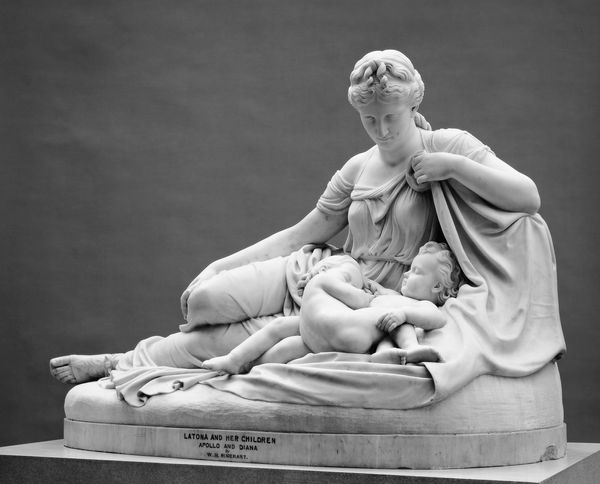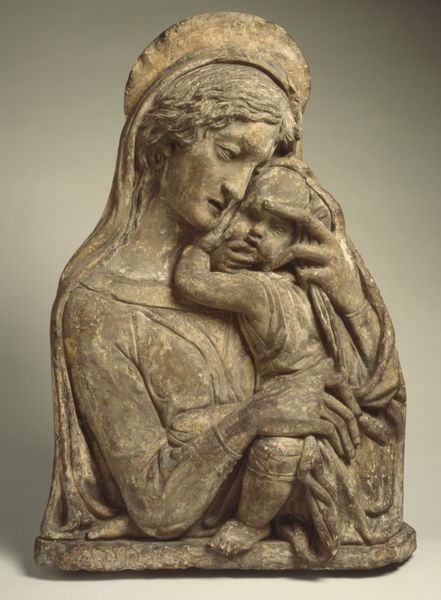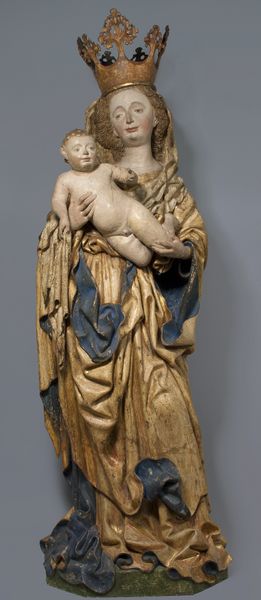
Moderkærlighed. Siddende ung kvinde, der trækker strømpen på sit barn, som hun har på skødet 1857
0:00
0:00
bronze, sculpture
#
portrait
#
sculpture
#
bronze
#
figuration
#
sculpture
#
black and white
#
genre-painting
#
realism
Dimensions: 88 cm (height) x 64.5 cm (width) x 70 cm (depth) (Netto)
Curator: This sculpture, “Moderkærlighed," or "Maternal Love," by O. Evens, created in 1857, captures a quiet, domestic moment. The bronze work depicts a seated young woman pulling a sock onto her child who sits on her lap. Editor: The patina and the sharp contrast give it a somber, almost weighty feel. The smooth, flowing lines create a sense of intimacy, yet the grayscale palette mutes the overall emotion, leaving me unsure. Curator: It speaks to 19th-century bourgeois ideals of motherhood, doesn't it? Evens presents this image of nurturing and domesticity, solidifying the role of women within the home. What's intriguing is how that very act of caring is itself being formalized, put on a pedestal, quite literally given its own sculpture in bronze. Editor: Indeed, the bronze suggests an attempt at permanence. This intimate, perhaps fleeting, act of mothering is frozen, transformed into an object. Looking at it now, I find myself considering the conditions in which this sculpture came into being. Was it a commission? A gift? Curator: I agree, there’s much to consider in terms of its production. Bronze casting itself was a fairly laborious and expensive process, reflecting a specific tier of society. Perhaps its creation provided income or even served to communicate very specific social messages. What power did these means of making impart on gender roles and societal expectations, solidifying the status of mother to a position to be celebrated? Editor: Seeing it in terms of labor helps me process its historical weight. I appreciate the sculpture’s intimacy even more now knowing about the socio-economic situation in which it came to be. Curator: And from the viewpoint of an activist, I think its importance is to critically examine such representation—maternal devotion and quiet labor. Editor: Exactly. Looking closer has made me reconsider the materials.
Comments
No comments
Be the first to comment and join the conversation on the ultimate creative platform.
